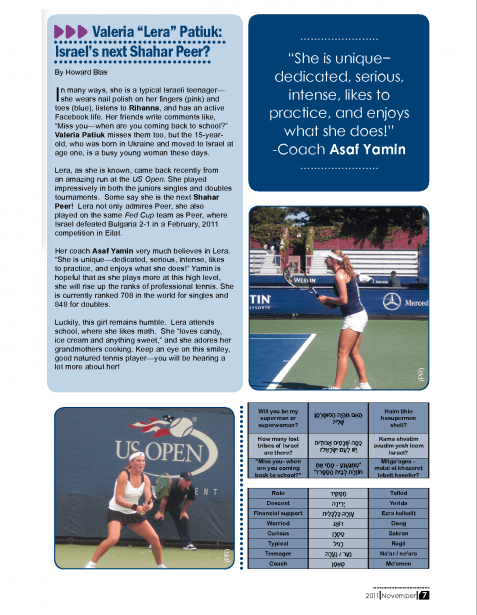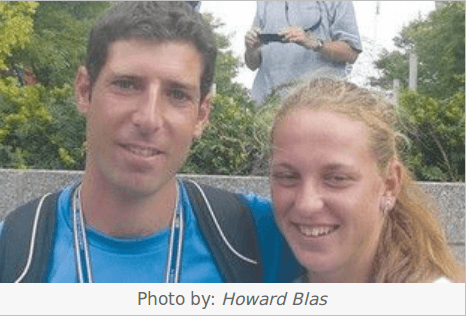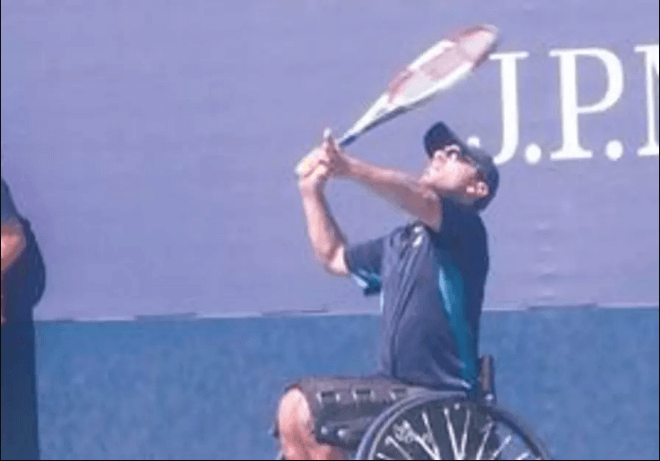Omri Casspi on meeting up with Gilad Shalit, what it’s like to wear number 36, and life as the only Israeli playing in the NBA
NEW YORK — Basketball player Omri Casspi achieved overnight rock star status in 2009 when he was drafted 23rd overall in the first round by the NBA’s Sacramento Kings. Casspi signed a three-year contract worth $3.5 million and became the first Israeli to play in the NBA.
Casspi averaged 10.8 and 8.6 points per game in his two seasons with the Kings, and in 2010, he was selected to play in both the NBA All-Star Weekend Rookie Challenge and NBA All-Star Weekend H–O–R–S–E Competition. On June 30, 2011, Casspi and a 2012 first round draft pick were traded to the Cleveland Cavaliers for forward/center J.J. Hickson.
Throughout Casspi’s NBA career, he has taken very seriously what he perceives as his role as ambassador of Israel and the Jewish People. Many United States communities have organized “Jewish Heritages Days” at their NBA stadiums, and Casspi has patiently posed for pictures and signed hundreds of autographs.
‘I feel happy being Israeli and Jewish every time I step on the court’
“I feel great pride being Jewish and Israeli, and a lot of responsibility. I feel happy being Israeli and Jewish every time I step on the court,” Casspi told The Times of Israel Wednesday.
Casspi was born into a sporting family. Father Shimon is an accomplished tennis player, mother Eliana was a competitive basketball player and sister Aviv played basketball for Elitzur Holon. Brother Eitan often travels in the States with Omri.
As a child in Israel, Omri Casspi played basketball for several local teams and at age 13, moved to the Maccabi Tel Aviv youth team. By age 17, Casspi turned pro and played for Maccabi Tel Aviv. He was drafted by the Kings at age 21, after he had completed his mandatory three-year service with the IDF.
Casspi signed with Maccabi Tel Aviv during the 2011 NBA lockout and intended to join the team if the lockout was not resolved.
The 161-day lockout, which began on July 1, 2011, ended on December 8, 2011, and a shortened season began on December 25th. Casspi is averaging 22.8 minutes per game with the Cleveland Cavaliers with 3.4 rebounds and 7.7 points.
Casspi spoke with The Times of Israel in the visitors’ locker room at Manhattan’s Madison Square Garden prior to Wednesday night’s heartbreaking 120-103 loss to the New York Knicks; the Cavaliers led at the half 61 to 49.

There is a picture of you and Gilad Shalit which appeared all over the Internet and Facebook yesterday. What is the story behind the picture and meeting?
Gilad Shalit came to Orlando for the NBA All Star Weekend last weekend. He wanted to keep it off the media. Nobody really knew he was there. He wanted to have quality time with his family and a few really good friends. We had dinner. It was very emotional for me.
How did he seem?
He seems fine. First of all, he is a big fan of basketball. I was honored to be around him and have dinner with him and talk.
How did you choose number 36?
[Smiling] Double Chai! I wore 18 in Sacramento. I come to Cleveland and Anthony Parker wore that number. I was going to either cut it in half and take 9 or double it — double chai — so I took 36.Were you disappointed that you didn’t get to play for Macabi Tel Aviv, or were you happy to just get on with the season after the lockout? Were you in Israel during the lockout? Are you in touch with NBA player Jordan Farmar (who also played for Maccabi Tel Aviv)?
I was in States working out. I never got a chance to go to Israel. I was happy and disappointed — both! I kind of wanted to play for Macabi Tel Aviv a little bit and see my family. I am happy I am playing basketball for Cleveland.
I am very friendly with Jordan. We are great friends. He is a great guy. He did a lot of great things for Maccabi Tel Aviv this year. [Farmar actually played for Maccabi during the lockout — he returned to the New Jersey Nets after the lockout ended]
What has the adjustment been like — to a new team and to a new Jewish community?
Because of the lockout, we had no training camp and no summer activities with my new team — we didn’t have time to bond with the guys. We are going to get close this summer.
The Jewish community — wherever we go, West or East — there are a lot of people with flags. They come to support me, invite me for chagim…
Has the Jewish community’s excitement for you died down over time?
I get a warm reception. It has always been great.
Is there a communication gap between the Jewish communities of the US and Israel?
In Israel, we are not seen as a Jewish community. We are a country. It is a little different. Here, in the United States, people really get together. I think the two do understand each other — absolutely. In Israel, we support the Jewish people of the US, and the Jewish people in the US have a lot of influence — political, etc. I have been here 2 or 3 years now — I don’t think we [Israel] would have a country without the people of the United States.
Any ideas what you will do after basketball?
[Laughing.] No, I am still thinking about my basketball career. Not yet!Jeremy Lin? [The Knicks’ Chinese American Harvard grad sensation]
I played against him before — when he was with Golden State. It is a really nice story. What a big step forward he made. Really nice story.
How do you relate to the Jeremy Lin story?
Everybody can relate in a way. When I first got here, many believed I could not play in the NBA. Then, I got better. When you see a guy like Jeremy Lin, it is inspirational.
(Source: http://www.timesofisrael.com




